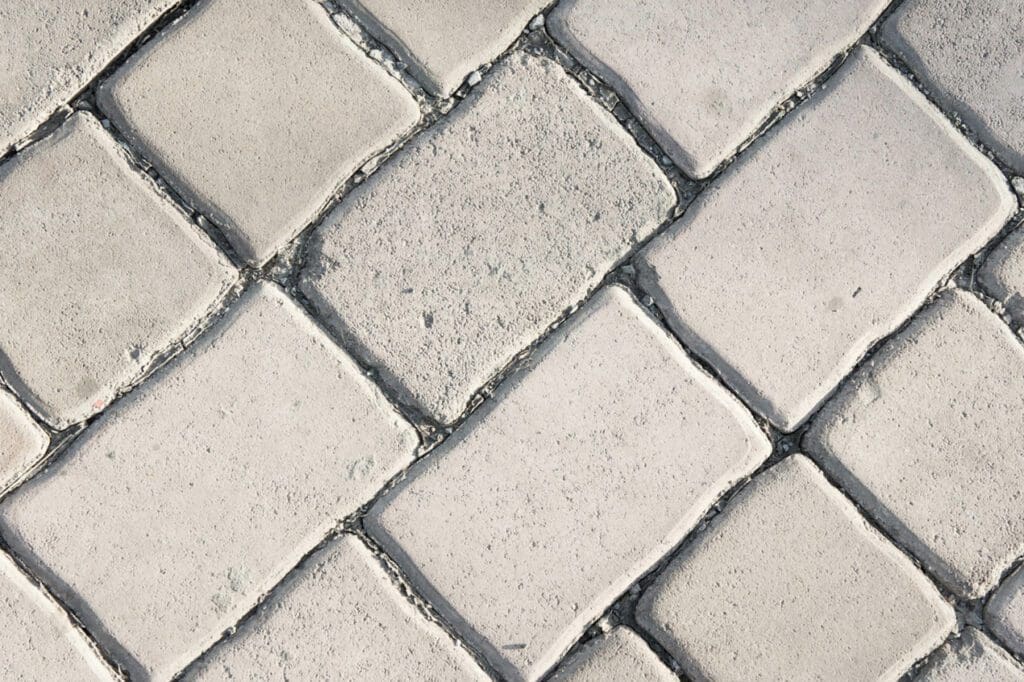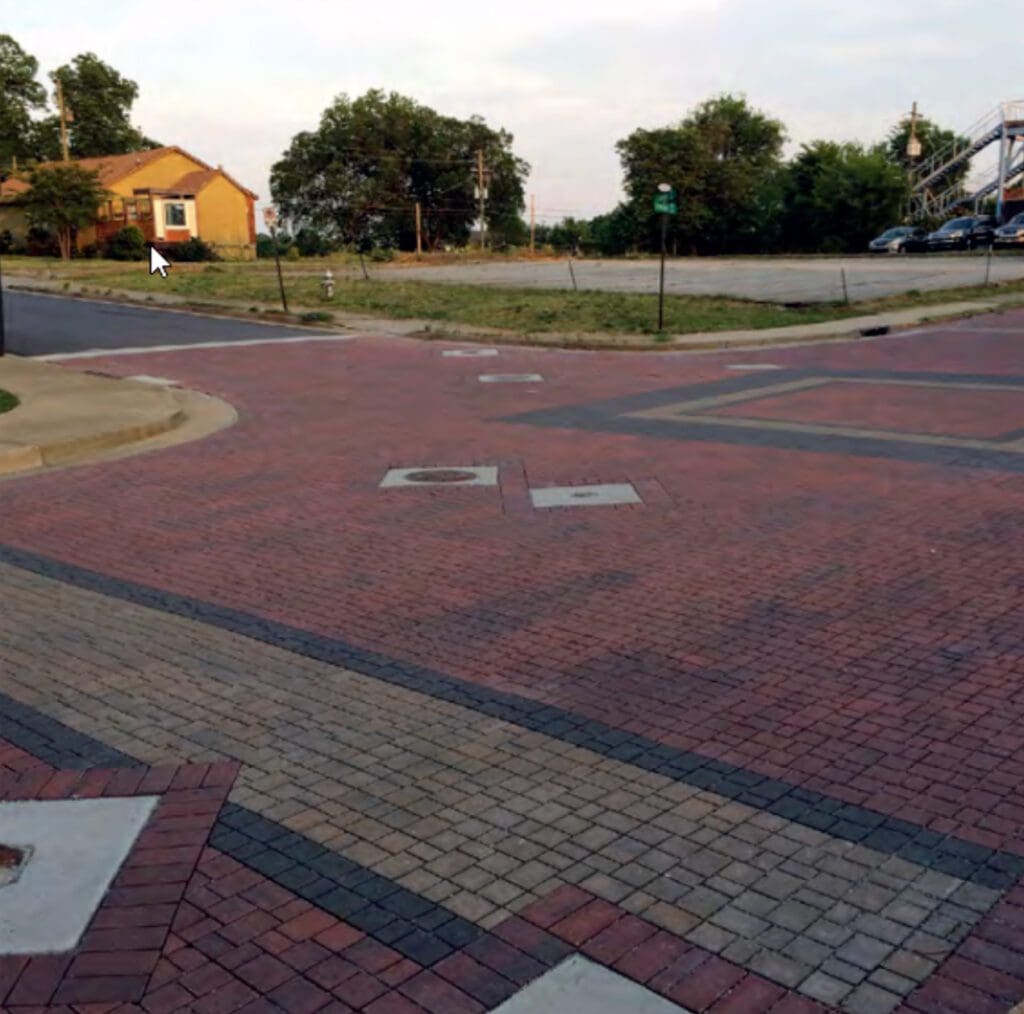Dear Ben, I am a public works official that has been charged with finding an environmentally friendly way to reduce flooding and improve stormwater management on our city roads. I appreciate the aesthetic of using concrete pavers for the surface of the roads, but can concrete pavers be utilized to help with our environmental and quality of life initiatives?
There are two distinct paver systems that can be used in the construction of roads. They largely look the same, but the main functional difference between the two systems comes down to how they drain out stormwater. The traditional (non-permeable) paver system will rely on a sloped drainage path to get rid of any water. The permeable paver system will allow water to flow through the joints between the pavers and into sublayers underground. With these two options in mind, why do the two exist, and why does it matter how water is drained from the surface? To answer these questions, let’s dive into the characteristics of each system.

The traditional non-permeable paver system has narrower joints that are stiff and typically filled with polymeric sand (Figure 1). Polymeric sand is a mixture of fine sands combined with additives. It is often a combination of silica mixed with polymers that when hydrated, creates a strong and solid medium between the pavers. This method is traditional in the sense that it relies on draining stormwater on a sloped path towards a drain in the side of the road. This is the common construction method even with other types of road materials like asphalt and is what most of us are used to experiencing. You will notice at the center of these roads they have a cross slope that enables water to flow to the edges and thus to storm drains often nestled beneath sidewalks. Beneath a traditional paver system are the aggregate bedding and foundation layers that help keep the road level to sustain the heavy loads it receives from all sorts of vehicles. The firmly united paver surface is also preferable in deterring the growth of weeds, it is more insect resistant (i.e., prevents ant hills), and the polymeric sands do come in a variety of colors for aesthetic purposes.

The Permeable Interlocking Paver System (PICP) is a more modern technology that is gaining increased popularity for its positive influence on the environment. In fact, it was developed for that very purpose. The joints between these pavers are widened and filled with crushed aggregate as opposed to fine sand (Figure 2). The increased width and increased porosity from filling the joint with a coarser material enables stormwater to be actively absorbed. Ultimately, it will limit water from pooling and dragging across the paver surface where the water can develop waste, become toxic, and overwhelm storm drain capacities that lead to flooding. Similarly, the permeable system has a series of layers that include the initial foundation layers, but underneath these, it has multiple layers composed of varying thickness, and aggregate types and sizes. These layers have purposes that include interception, filtration, and infiltration of water to hold and eventually release a greater volume of water safely and ecologically to the earth.

Case studies have shown, a road project that includes a permeable paver system along with supporting storm drains is a realistic approach. As a public works official, you may already be aware that storm drains are accompanied by a series of underground tunnels and vaults that are used to store water and transport the water away. As such, it can be a costly and possibly wasteful task to remove all that existing infrastructure. Therefore, utilizing newer permeable paver technologies to accompany existing stormwater infrastructure can greatly improve capabilities while offering the improved ability for unique road designs (Figure 3). If you would like to learn more about these paver systems and read up on real life applications, please visit the case studies section at Interlocking Concrete Pavement Institute (ICPI).
Source: PICP, Atlanta Resilient Green Infrastructure with PICP, 2015, Interlocking Concrete Pavement Institute (PICP)